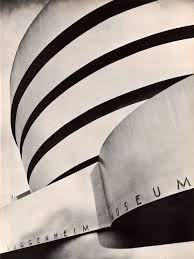Jun 8 2018 - Sep 12 2018
New York City, NY
This comprehensive exhibition features more than 175 sculptures, paintings, and drawings by the Swiss artist Alberto Giacometti (1901–1966). It is the first major museum presentation dedicated to the artist in the United States in more than 15 years.
A preeminent artist of the twentieth century, Alberto Giacometti (1901–1966) investigated the human figure for more than forty years. This comprehensive exhibition of more than 175 sculptures, paintings, and drawings, a collaboration with the Fondation Giacometti in Paris, examines anew the artist’s practice and his unmistakable aesthetic vocabulary. Featuring important works in bronze and in oil, as well as plaster sculptures and drawings never before seen in this country, the exhibition aims to provide a deeper understanding of this artist, whose intensive focus on the human condition continues to provoke and inspire new generations.
Giacometti was born in the Swiss village of Borgonovo. His father, Giovanni, a recognized Post-Impressionist painter, introduced him to painting and sculpture at a young age. Giacometti moved to Paris in 1922 and eventually settled in a 15-by-16-foot studio in the artists’ quarter of Montparnasse. He produced the greater part of his oeuvre in this tiny space, which he maintained until the end of his life. Giacometti’s brother Diego, also an artist, became his assistant; he and Annette Arm, whom Giacometti wed in 1949, were the artist’s most frequently rendered models.
During his early years in Paris, Giacometti pursued a deep interest in Cubism and a fascination with the unconscious and dream imagery that led to his association with the Surrealists. African, Cycladic, Egyptian, and Oceanic art captured his attention as well, influencing the formal development of his figures. In the late 1930s he began sculpting pocket-size heads and figures in which he explored perspective and distance; these spatial concerns would remain paramount throughout his career. Giacometti may be best known, however, for the painted portraits and distinctive sculptures that he created in the late 1940s. These innovative works, including a series of elongated standing women, striding men, and expressive busts, resonated strongly with a public grappling with the extreme alienation and anxiety wrought by the devastation of World War II. Giacometti was unflinching in his portrayal of humanity at its most vulnerable.
Credit: Exhibition overview from museum website.
Image: Installation view: Giacometti, Solomon Guggenheim Museum, New York,. Photo: David Heald
Whether you go or not, the exhibition catalog, Giacometti, offers a fresh and incisive account of his creative output. Published on the occasion of Giacometti’s first major museum presentation in the US in over a decade, the volume brings together nearly 200 sculptures, paintings and drawings to trace the artist’s wide-ranging and hugely innovative engagement with the human form across various mediums. While Giacometti may be best known for his distinct figurative sculptures that emerged after World War II, including a series of elongated standing women, striding men and expressive busts, this volume devotes equal attention to the artist’s early and midcareer development. It explores his lesser-known engagement with Cubism and Surrealism as well as African, Oceanic and Cycladic art, while also highlighting his remarkable talents as a draftsman and painter alongside his sculptural oeuvre. Of particular focus is Giacometti’s studio practice, which is examined through rarely seen plaster sculptures that highlight the artist’s working process.
Select Giacometti to learn more, or to place this book in your Amazon shopping cart. Your Amazon purchase through this link supports ArtGeek with a small commission.
Exhibition Venues & Dates
Jun 8 2018 - Sep 12 2018
New York City, NY


